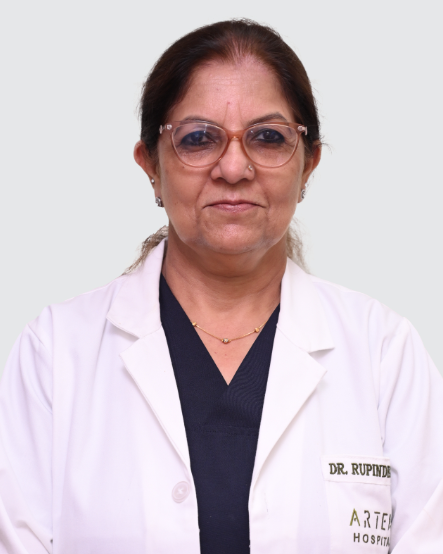Hodgkin's and Non Hodgkin's Lymphoma Symptoms

Quick Summary
Symptoms of Lymphoma
Symptoms of lymphoma can vary depending on the type of lymphoma and the stage of the disease. However, some common symptoms of lymphoma include:
- Enlarged lymph nodes
- Fever
- Night sweats
- Weight loss
- Fatigue
- Chest pain
- Skin rash
- Jaundice
If you have any of these symptoms, it is important to see your doctor right away.
Hodgkin’s and non-Hodgkin’s lymphoma are two distinct types of cancers affecting the lymphatic system. Certain symptoms often indicate the presence of Hodgkin’s lymphoma, these include characteristics related to the lymph nodes and additional indications that may vary from person to person. Recognising these signs is crucial for early detection and prompt medical intervention.
On the other hand, Non-Hodgkin’s lymphoma presents a broader spectrum of symptoms than Hodgkin’s lymphoma. While certain similarities exist between the two, non-Hodgkin’s lymphoma symptoms encompass a wider range that may involve different body areas.
The following blog discusses the various symptoms of lymphoma in females and males. Continue reading to learn the signs and symptoms you should look out for.
What is Hodgkin’s and Non-Hodgkin’s Lymphoma?
Hodgkin’s and non-Hodgkin’s lymphoma are the two types of lymphoma that develop in the lymphatic system.
Hodgkin’s lymphoma, also known as Hodgkin’s disease, differs from non-Hodgkin’s lymphoma by the presence of Reed-Sternberg cells (large, atypical cells found in the lymph nodes).
- The exact cause of these lymphomas is not known. However, some individuals have an increased risk of developing these cancers.
- Hodgkin’s lymphoma has two types: Classical Hodgkin lymphoma and nodular-lymphocyte predominant Hodgkin lymphoma.
- There are more than 60 types of non-Hodgkin’s lymphoma, depending on the types of cells affected (B-cells or T-cells).
Understanding B-Cells and T-Cells
B-cells and T-cells are two types of white blood cells that play crucial roles in the immune system.
They are essential components of the adaptive immune system, working together to defend the body against pathogens, such as viruses and bacteria.
- B-cells, short for B lymphocytes, produce antibodies, specialised proteins that recognise and bind to foreign substances in the body called antigens.Antigens allow the immune system to identify harmful substances like viruses and bacteria in the body.
- T-cells, or T lymphocytes, are produced in the bone marrow like B-cells but undergo maturation in the thymus gland, hence their name. T-cells are responsible for recognising and directly attacking infected or abnormal cells in the body.They have two main subtypes: helper T-cells and cytotoxic T-cells.


Hodgkin’s Lymphoma Symptoms
The risk for developing Hodgkin’s lymphoma is highest between the ages of 20s and 30s. Since these younger patients are usually otherwise healthy, their bodies can better handle the disease without showing Hodgkin’s lymphoma symptoms for longer.
Hodgkin’s lymphoma is also common in people over age 55.
Hodgkin’s lymphoma can present with various symptoms, although not everyone with the disease may experience all of them. Common Hodgkin’s lymphoma symptoms include:
- Painless Swelling in a Lymph Node: The most common symptom of Hodgkin’s lymphoma is one or more swollen lymph nodes.These swollen lymph nodes are usually painless and may develop in the neck, armpit, upper chest, abdomen, or groin.
- Pain in Swollen Lymph Nodes after Drinking Alcohol: While swollen lymph nodes caused by Hodgkin’s lymphoma are usually painless, they might become painful after drinking alcohol.
- Persistent Fatigue: Fatigue and a lack of energy can also be signs of the disease.
- Decreased Appetite: Some people may experience decreased appetite as a symptom of Hodgkin’s lymphoma.
- Itching: Having dry, itchy skin, especially after bathing or drinking alcohol without any apparent cause, may be one of the symptoms of lymphoma in females and males.
- Persistent Cough and Shortness of Breath: Another symptom of Hodgkin lymphoma include cough and shortness of breath due to enlarged or swollen lymph nodes in the chest.
These lymph nodes may also cause chest discomfort. - Abdominal Pain or Swelling: Hodgkin lymphoma may also cause an enlarged liver or spleen, leading to abdominal pain or swelling and a feeling of fullness.
- Other Possible Symptoms: Other symptoms can depend on where the Hodgkin lymphoma is located. While these symptoms are not common, they can occur.
Enlarged lymph nodes can press on your nerves and cause pain. They can also cause:- Swelling in arms and legs (by blocking the lymphatic fluid flow around the body)
- Yellowing of the skin and eyes (by blocking bile flow from the liver)
Hodgkin’s Lymphoma B Symptoms
Some people with Hodgkin’s lymphoma may experience the B symptoms. Hodgkin’s lymphoma B symptoms are crucial for staging the disease and determining the individual’s outlook. These symptoms include:
- Unexplained Fever: Recurrent fevers without infection, often with no obvious cause, is a typical symptom of Hodgkin’s lymphoma.
A fever could persist for multiple weeks, with occasional fluctuations at night or during the day. - Drenching Night Sweats: People with Hodgkin’s lymphoma may experience profuse sweating during sleep, with or without fever.
- Unexplained Weight Loss: Significant weight loss without trying, usually defined as losing more than 10% of body weight within a span of six months, is a common symptom of Hodgkin’s lymphoma.
Patients with B symptoms may sometimes require more aggressive treatments. Hodgkin’s lymphoma can also be categorised by A symptoms.
Hodgkin’s lymphoma A symptoms refer to the absence of B symptoms, i.e., no fever, night sweats, and unexplained weight loss.
Symptoms of Hodgkin’s Lymphoma in the Bone Marrow
Sometimes, Hodgkin’s lymphoma can develop in the bone marrow. When it affects bone marrow, Hodgkin’s lymphoma symptoms may include:
- Shortness of breath and tiredness resulting from anaemia (low red blood cell count)
- Increased risk of infections resulting from leukopenia (low white blood cell count)
- Bleeding problems, like heavy periods, nosebleeds, or a rash of tiny blood spots under your skin result from thrombocytopenia (low platelet count).
Non-Hodgkin’s Lymphoma Symptoms
Non-Hodgkin’s lymphoma can present with various symptoms, although you must note that the specific symptoms can vary depending on the subtype and stage of the disease. Sometimes, non-Hodgkin’s lymphoma may not cause symptoms until it grows large. Some common non-Hodgkin’s lymphoma symptoms include:
- Enlarged Lymph Nodes: Non-Hodgkin lymphoma may cause lymph nodes to become swollen or enlarged. The swelling can occur in various body parts, such as the side of the neck, armpits, groin, or above the collarbone.
- Enlarged lymph nodes, which may feel like lumps under the skin and are usually not painful, are common symptoms of non-Hodgkin’s lymphoma.
- Persistent Fatigue: Fatigue, weakness, and low energy levels can be symptoms of non-Hodgkin’s lymphoma.
- Severe or Frequent Infections: Non-Hodgkin lymphoma can weaken the immune system, increasing susceptibility to infections.
- Easy Bruising and Bleeding: Non-Hodgkin lymphoma can cause the body to destroy blood cells, causing easy bruising and bleeding resulting from low platelet count.
Non-Hodgkin’s Lymphoma Symptoms in Different Body Parts
- Lymphoma in the Abdomen
- Abdominal Pain or Swelling: Lymphoma cancer that begins or grows in your abdomen can cause pain and swelling in the belly.
This can result from an enlarged liver or spleen or a buildup of large amounts of fluid. - Loss of Appetite: An enlarged spleen may press on your stomach, causing a loss of appetite and feeling full after only eating a small amount of food.
- Back Pain: Cancer in the abdomen can cause a stretched belly, causing non-Hodgkin’s lymphoma symptoms of back pain and abdominal pain.
- Nausea or Vomiting: Non-Hodgkin’s lymphoma in the stomach or intestine can also cause nausea or vomiting.
- Abdominal Pain or Swelling: Lymphoma cancer that begins or grows in your abdomen can cause pain and swelling in the belly.
- Lymphoma in the Chest
- Coughing or Trouble Breathing: When non-Hodgkin lymphoma starts in the thymus or the lymph nodes in your chest, it may press on the nearby windpipe, causing symptoms like persistent coughing and trouble breathing.
It may also cause a feeling of chest pain or pressure.
- Coughing or Trouble Breathing: When non-Hodgkin lymphoma starts in the thymus or the lymph nodes in your chest, it may press on the nearby windpipe, causing symptoms like persistent coughing and trouble breathing.
- Lymphoma in the Skin
- Itchy Lumps under the Skin: Lymphomas of the skin can be seen or felt and usually develop as itchy, red, or purple lumps under the skin.
- Lymphoma in the Brain
- Headache and Seizures: When lymphoma affects the brain (primary brain lymphomas), it can cause symptoms like headache, trouble thinking, personality changes, weakness in body parts, and sometimes seizures.
- Symptoms due to the Spread of Cancer: Some types of lymphoma can spread to areas around your brain and spinal cord.
This may cause symptoms like double vision, trouble speaking, and facial numbness.
In rare cases, non-Hodgkin’s lymphoma symptoms of back pain may also be experienced during spinal metastasis (when cancer spreads from another body area to the spine).
Non-Hodgkin’s Lymphoma B Symptoms
Like Hodgkin’s lymphoma, non-Hodgkin’s lymphoma can also have B symptoms. These symptoms help stage the disease. They include:
- Unexplained Fever: Temperature above 100.4℉
- Drenching Night Sweats: Most people experience night sweats that soak their night clothes or bedsheets. Sometimes, sweating can occur during the day as well.
- Unexplained Weight Loss: Losing more than 10% of body weight during six months before diagnosis
Symptoms of Lymphoma in Females
Apart from the above-mentioned common symptoms of lymphoma, women can experience other symptoms when non-Hodgkin’s lymphoma develops in a reproductive organ. The following are the symptoms of lymphoma in females:
- Pain or Pressure in the Pelvis: A mass in the pelvic area can press on the nerves or other organs, causing pain or pressure in your pelvis or abdomen.
- Dyspareunia (pain during sex): A mass in the pelvis can make sex painful and uncomfortable.
- Abnormal Uterine Bleeding: If lymphoma develops in the uterus or cervix, you may have abnormal bleeding during your period or begin bleeding again after menopause.
Managing the Symptoms of Lymphoma
Managing the symptoms of lymphoma involves a multidisciplinary approach that includes lifestyle modifications and supportive care. The following tips and strategies can help manage lymphoma symptoms:
- Swollen Lymph Nodes: Although lymph nodes are usually not painful, they may cause pain when they press against nerves and tissues in the surrounding areas.
Your doctor can prescribe pain relief medications to help manage pain. You can also try other things to cope with pain, such as:- Relaxation techniques like meditation, mindfulness, or imagery
- Complementary therapies like acupuncture, massage, or yoga
- Heat or cold therapy
- Fatigue: Although there is no cure for cancer-related fatigue, some tips can help you manage it. These tips include:
- Plan your workload and divide them into manageable portions.
- Plan regular short rest breaks throughout the day.
- Try to follow a sleep routine.
- Ask family and friends for help and save your energy wherever you can.
- Night Sweats: It is a common symptom of lymphoma. You can do the following to manage night sweats:
- Avoid spicy foods, caffeine, and sugary drinks before bedtime to ease night sweats.
- Exercise early than later in the day to avoid night sweats.
- Switch on the fan or open a window to keep your bedroom cool at night.
- Place a soft towel on the bed to protect your sheets from getting wet.
- Weight Loss: You may be referred to a dietician to help with nutritional difficulties. To gain weight, make sure you are getting enough calories.
However, don’t eat foods high in sugar and saturated fat, like biscuits and cakes, as they can lead to other health issues. Some ways to get calories include:- Choose full-fat alternatives of low-fat options.
- Add oil, butter, sauces, or cheese to vegetables, pasta, or bread.
- Snack between meals with unsalted nuts, dried fruits, and full-fat products.
- Itching: Itching usually settles quickly once treatment starts for lymphoma. However, if you experience intense itching, seek medical help.
Your doctor may prescribe corticosteroid medication like prednisolone or hydrocortisone to ease itching. You can also try to manage your itching:- Pressing or tapping the skin instead of scratching
- Cutting your nails short to prevent scratching
- Wearing cotton gloves in bed to avoid scratching in your sleep
- Using an unscented and anti-itch moisturiser after bathing
- Having an oatmeal bath
- Wearing soft, loose-fitting clothes.
When to Consult a Doctor?
The above symptoms do not always mean you have Hodgkin or non-Hodgkin lymphoma. They can also indicate other health conditions, like infection.However, you should consult about these symptoms to get them checked, especially when you have swollen glands that persist for more than six weeks without a recent infection.
The healthcare provider may physically check your swollen lymph nodes in the underarm, neck, or groin.
They may also check if the liver or spleen is enlarged. If they find abnormalities, they may perform further diagnostic tests to identify the best Hodgkin Non Hodgkin Lymphoma Treatment. These tests include:
- Lymph node biopsy
- Blood tests
- Bone marrow biopsy
- Imaging tests
Takeaway
Hodgkin’s and non-Hodgkin’s lymphoma include similar symptoms like painless swelling of lymph nodes, unexplained weight loss, fatigue, fever, night sweats, abdominal pain and swelling, persistent itching, etc.
However, the specific symptoms experienced may vary depending on the subtype and stage of the lymphoma.
Recognising the symptoms associated with these diseases is important for early detection and appropriate treatment.
HexaHealth, as a comprehensive healthcare platform, can provide valuable assistance in diagnosing and managing Hodgkin’s and non-Hodgkin’s lymphoma symptoms.
Through our network of healthcare professionals, we can facilitate timely consultations, diagnostic tests, and appropriate treatment options. Our access to medical expertise can ensure that you receive the necessary support and guidance throughout your healthcare journey. So what are you waiting for? Get in touch with us TODAY!
Suggested Reads
Frequently Asked Questions
What are Hodgkin’s lymphoma symptoms?
Common Hodgkin’s lymphoma symptoms can include:
- Painless swelling of lymph nodes
- Unexplained weight loss
- Fatigue
- Fever
- Night sweats
- Itching
- Loss of appetite
Other symptoms may include:
- Chest pain
- Coughing
- Abdominal pain or discomfort
However, not everyone may experience these symptoms. Moreover, these symptoms may not always mean having Hodgkin’s lymphoma.
What are the non-Hodgkin’s lymphoma symptoms?
While the specific symptoms can vary depending on the stage and subtype of cancer, common non-Hodgkin’s lymphoma symptoms can include:
- Swollen lymph nodes
- Fever
- Night sweats
- Unexplained weight loss
- Fatigue
- Itching
- Abdominal pain or swelling
Different symptoms can be experienced depending on where the lymphoma begins in the body.
What are the symptoms of lymphoma in females?
Symptoms of lymphoma in females are the same as those in males, such as:
- Painless swelling of lymph nodes
- Unexplained weight loss
- Fatigue
- Fever,
- Night sweats
- Itching
- Loss of appetite
- Abdominal pain or swelling
However, they may experience additional symptoms if the lymphoma develops in a reproductive organ. These symptoms include pelvic pain or pressure, pain during sex, and abnormal uterine bleeding.
What are Hodgkin’s lymphoma B symptoms?
Hodgkin’s lymphoma B symptoms refer to specific systemic symptoms that can accompany the disease. They include unexplained fever, drenching night sweats, and significant weight loss of more than 10% of body weight within six months before diagnosis.
The presence of B symptoms helps stage the disease and determine the prognosis.
What are Hodgkin’s lymphoma A symptoms?
Hodgkin’s lymphoma A symptoms are the absence of B symptoms. People with Hodgkin lymphoma A have no fever, night sweats, or unexplained weight loss.
Is non-hodgkin’s lymphoma symptoms of back pain a sign of cancer spread?
Non-Hodgkin’s lymphoma symptoms of back pain can indicate cancer spreading to the spine. However, it is rare and occurs in less than 5% of patients.
Can you explain the typical symptoms of Hodgkin’s and non-Hodgkin’s lymphoma?
The first and typical symptoms of both Hodgkin’s and non-Hodgkin’s lymphoma are:
- Painless swelling of lymph nodes
- Fever
- Night sweats
- Unexplained weight loss
Other common symptoms are itching and loss of appetite.
What are the early warning signs of Hodgkin’s lymphoma?
Early warning signs of Hodgkin’s lymphoma can include:
- Painless swelling or enlargement of lymph nodes in the armpits, neck, or groin
- Unexplained weight loss
- Fatigue
- Persistent or recurrent fever without an apparent cause
If these symptoms persist, medical evaluation is recommended.
What are the stage-wise symptoms of Hodgkin’s lymphoma?
The stage-wise, Hodgkin’s lymphoma symptoms can vary. In the early stages of lymphoma, symptoms may be mild or absent. Usually, the most common early sign of the disease is an enlargement or swelling of one or more lymph nodes, causing a painless lump under the skin.
As cancer progresses, it may cause other symptoms like:
- Fatigue
- Weight loss
- Night sweats
- Severe itching
- Fever
What are the stage-wise symptoms of Non-Hodgkin’s lymphoma?
Non-Hodgkin’s lymphoma symptoms usually start as:
- Painless swelling of lymph nodes
- Fever
- Night sweats
- Unexplained weight loss
As the disease progresses, the symptoms experienced may worsen. Towards the last stage, symptoms may include:
- Loss of appetite
- Confusion
- Changes in breathing
- Feeling cold
- Fatigue
- Loss of interest
- Incontinence
- Pain
- Inability to close your eyes.
What are Hodgkin’s lymphoma symptoms in its advanced stage?
In the advanced stage of Hodgkin’s lymphoma, cancer spreads to at least one organ outside the lymphatic system, like the lungs, liver, or bone marrow. This causes symptoms like:
- Persistent fatigue
- Night sweats
- Weight loss
- Recurrent fevers
- Loss of appetite
What are non-Hodgkin’s lymphoma symptoms in its advanced stage?
Non-Hodgkin’s lymphoma symptoms in its advanced stages may include:
- Persistent fatigue
- Night sweats
- Fever
- Unexplained weight loss
- Abdominal pain or swelling
- Loss of appetite
- Itching
- Bone pain (if the bone marrow is affected), etc.
How do the symptoms of Hodgkin’s lymphoma differ from non-Hodgkin’s lymphoma?
Hodgkin’s and non-Hodgkin’s lymphoma share common symptoms, such as:
- Swollen lymph nodes
- Fatigue
- Itching
- Night sweats
- Weight loss
However, the symptoms might vary depending on the type and stage of lymphoma. In addition, non-Hodgkin’s lymphoma may cause symptoms like:
- Trouble thinking
- Headache
- Personality changes
- Seizures
- Double vision
- Facial numbness when the lymphoma affects the brain.
What are the specific indicators of Hodgkin’s lymphoma that I should watch out for?
Specific indicators of Hodgkin’s lymphoma include one or more enlarged or swollen lymph nodes in the neck, armpit, upper chest, abdomen, or groin. Other indicators include:
- Persistent fatigue
- Unexplained weight loss
- Recurrent fevers
- Night sweats
If the symptoms persist, you must seek medical advice.
Are there specific symptoms that may suggest non-Hodgkin’s lymphoma?
Specific symptoms that may suggest non-Hodgkin’s lymphoma include:
- Painless swelling of lymph nodes
- Unexplained weight loss
- Persistent fatigue
- Fever
- Night sweats
- Itching
- Abdominal pain or swelling
If these symptoms persist, medical evaluation is recommended.
What are the common physical signs of Hodgkin’s and non-Hodgkin’s lymphoma?
Common physical signs of Hodgkin’s and non-Hodgkin’s lymphoma include:
- Painless swelling of lymph nodes
- Unexplained weight loss
- Fever
- Fatigue
- Night sweats
- Itching
- Enlarged spleen or liver, etc.
Are there any unique symptoms that may indicate the presence of Hodgkin’s or non-Hodgkin’s lymphoma?
No unique symptoms may indicate the presence of Hodgkin’s or non-Hodgkin’s lymphoma, as these symptoms can also indicate other medical conditions.
However, if you experience these symptoms, especially swollen glands that do not go away after six weeks, you should consult your doctor for evaluation.
Last Updated on: 7 July 2023
Author
HexaHealth Care Team
HexaHealth Care Team brings you medical content covering many important conditions, procedures falling under different medical specialities. The content published is thoroughly reviewed by our panel of qualified doctors for its accuracy and relevance.
Expert Doctors (10)
NABH Accredited Hospitals (6)
Latest Health Articles


























 Open In App
Open In App